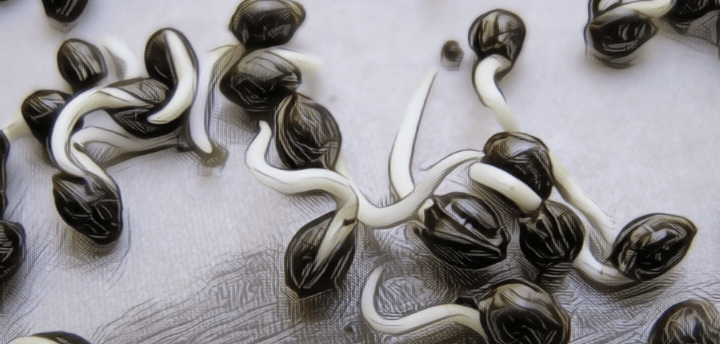The Intricate World of a Cannabis Seed: An In-Depth Exploration
In the realm of cannabis cultivation, the journey of every plant begins with a tiny yet immensely potent entity – the cannabis seed. This small package holds not just the potential for growth but also the intricate complexities of genetics and the promise of what's to come. Let's embark on an informative exploration of the cannabis seed, delving into its functions and the fundamental principles required for its optimal growth and development.
CULTIVATION TECHNIQUESGENETICS AND BREEDING
11/19/20233 min read


The Anatomy of a Cannabis Seed At first glance, a cannabis seed might appear simple, but it's a marvel of nature's design. Enclosed in a hard, protective shell, the seed houses the embryo – the initial point from where a new cannabis plant will sprout. This shell is designed to protect the precious cargo from environmental hazards and potential predators until conditions are favorable for germination.
Germination: The First Critical Step Germination is the process where the seed awakens from its dormancy. Triggered by the right conditions of moisture, warmth, and sometimes light, this stage is crucial. The seed absorbs water, swelling and breaking through its shell. A small root (radicle) emerges first, anchoring the plant to the soil, followed by the shoot that will grow upwards towards the light.
Genetics: The Blueprint of Growth Inside every cannabis seed lies a blueprint of its genetic makeup, determining everything from the plant's size, shape, and resilience to pests and diseases, to its psychoactive and medicinal properties. This genetic code is a combination of traits from its parent plants, making each seed unique in its potential.
Optimal Conditions for Seed Growth For a cannabis seed to transition from dormancy to a thriving plant, several conditions must be met:
Temperature: Cannabis seeds require a warm (but not hot) environment to germinate effectively, generally between 70-85°F (20-30°C).
Moisture: Consistent moisture is crucial for germination. The medium in which the seed is planted must be damp but not waterlogged, as excessive moisture can cause rot.
Oxygen: Seeds need oxygen to germinate; hence, the growing medium should be loose and well-aerated.
Light: While some seeds can germinate in the dark, light is often beneficial after the initial sprouting to promote healthy growth.
The Role of Hormones in Growth Plant hormones play a significant role in the life cycle of a cannabis plant. During germination and the early stages of growth, gibberellins and cytokinins are critical. These hormones regulate cell division, stem elongation, and the development of new leaves.
Nutritional Needs for Young Plants Once the seed has germinated, its nutritional needs change. Initially, the seedling relies on the energy reserves stored in the seed. As it grows, it requires more nitrogen, phosphorus, and potassium, along with trace elements like calcium, magnesium, and iron, to develop a robust root system and healthy foliage.
Light: The Energy Source Light is the energy source for cannabis plants, with photosynthesis converting light energy into chemical energy. The spectrum and intensity of light the plant receives can significantly influence its growth rate and overall health.
Water: The Essence of Life Water is vital for transporting nutrients within the plant and maintaining cell structure. However, balance is key. Overwatering can lead to root rot and other issues, while under-watering can stress the plant, stunting its growth.
The Growth Phases of a Cannabis Plant From seed to harvest, a cannabis plant goes through several growth stages:
Seedling Phase: This stage is characterized by the growth of the first leaves. The plant is delicate and requires careful attention to moisture and light.
Vegetative Phase: The plant undergoes rapid growth, developing its root system, stems, and leaves. This phase requires increased nutrients and light exposure.
Flowering Phase: Triggered by changes in light exposure, this is when the plant develops buds. The nutritional needs shift, with an increased requirement for phosphorus and potassium.
Challenges in Cannabis Seed Cultivation Cultivating cannabis from seed can present several challenges, including:
Seed Quality: The genetic quality of the seed is paramount. Poor-quality seeds may lead to weak or non-viable plants.
Environmental Stressors: Factors like temperature fluctuations, pests, and diseases can impact the growth of the plant.
Cultivation Errors: Overwatering, under-watering, incorrect lighting, or nutrient imbalances can all hinder the development of a healthy cannabis plant.
The cannabis seed is a symbol of potential and the starting point of a complex journey that requires knowledge, patience, and care. Understanding the intricacies of this small yet mighty entity is crucial for anyone aspiring to cultivate cannabis. From the moment of germination to the final stages of flowering, each step in the life cycle of a cannabis plant is a testament to the delicate balance of nature and the skill of the cultivator. As the industry continues to grow, so does our understanding and appreciation of the humble cannabis seed – a tiny speck packed with possibilities.
Contacts
bart@smokyb420.com
(+27) 084-717-2943
